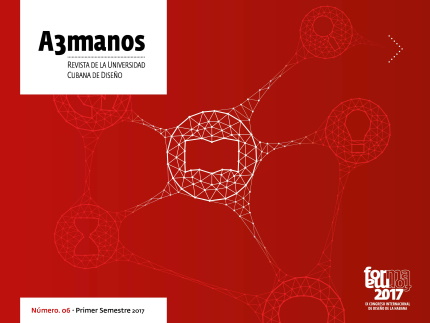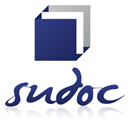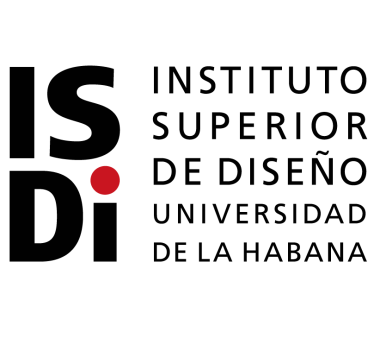Design like an instrument of ambiental gestion.
##plugins.themes.bootstrap3.article.main##
Abstract
The human activity affects the daily nature and causes more environmental problems than the response capacity of the environment as well. Then, they are required conciliatory instruments to foster a change in human behavior. This article offers an approach to the design as a research tool of environmental management in Cuba based on a diachronic analysis of our environment in the context of the Cuban scientific community in technical sciences and the integration of the environmental dimension in design. The aim is to analyze the general situation on the object of study. In conclusion, the need for a design as a tool of environmental management with a strategic, participatory and process approach is obvious, as an instrument of encouraging the Cuban designer behavior.
##plugins.themes.bootstrap3.article.details##

This work is licensed under a Creative Commons Attribution-NonCommercial-ShareAlike 4.0 International License.
- Attribution — You must give appropriate credit , provide a link to the license, and indicate if changes were made . You may do so in any reasonable manner, but not in any way that suggests the licensor endorses you or your use.
- NonCommercial — You may not use the material for commercial purposes .
- No additional restrictions — You may not apply legal terms or technological measures that legally restrict others from doing anything the license permits.
- ShareAlike — If you remix, transform, or build upon the material, you must distribute your contribution under the same license as the original. NOTE: This point applies to numbers 1 to 20 of the magazine with the previous CC-BY-NC-SA 4.0 license. Does not apply to the new CC BY-NC 4.0 license from Volume 11, Number. 21 (2024).
References
ALVARADO, A., et al. (2015). Criterios de sostenibilidad en metodologías de diseño. ICONOFACTO. 11.
BONSIEPE, G. (1973). "Diseño, tecnología y ecología." Boletín Informativo/Suplemento DII 2: 1-7.
BONSIEPE, G. (1978). Teoría y práctica del diseño industrial. Elementos para una manualística crítica. Barcelona, Gustavo Gili.
BONSIEPE, G. (2011). Design, cultura e Sociedade. Sao Paulo, Blucher.
BONSIEPE, G. Y T. MALDONADO (2004). Proyectar hoy. Argentina, Nodal.
CESCHIN, F. Y I. GAZIULUSOY (2016). "Evolution of design for sustainability: From product design to design for system innovations and transitions." Design Studies.
FERNÁNDEZ, S. Y G. BONSIEPE (2008). Historia del diseño en América Latina y el Caribe. Sao Paulo, Bruches.
Fuad-Luke, A. (2002). Manual de diseño ecológico. Un catálogo completo de mobiliario y objetos para la casa y la oficina. Palma de Mallorca.
GARCÍA, D. (2013). Metodología de gestión ambiental para agroecosistemas con probables riesgos a la salud por presencia de contaminación química. Centro de Estudios de Gestión de Ciencias e Innovación. Cuba, Instituto Superior de Tecnologías y Ciencias Aplicadas.
GOICOCHEA, C. (2012). Modelo de gestión ambiental para el manejo de los residuos sólidos domésticos en La Habana, Cuba. Facultad de Gestión de la Ciencia, la Tecnología y el Medio Ambiente. La Habana, Cuba, Instituto Superior de Tecnologías y Ciencias Aplicadas.
ISAAC, L. (2004). Modelo de gestión integrada calidad- medioambiente (cyma) aplicado en organizaciones cubanas. Matemática Aplicada. La Habana, Instituto Superior Politécnico José Antonio Echeverría.
MALDONADO, T. (1981). Diseño Industrial. Barcelona, Gustavo Gili.
MALDONADO, T. (1981). El diseño industrial reconsiderado. Definición, historia, bibliografía. Barcelona, España, Gustavo Gili.
MALDONADO, T. (2012). Cultura, Sociedade e Técnica. Sao Paulo, Blucher.
MALDONADO, T. AND G. BONSIEPE (2004). Dos Textos Recientes. Proyectar hoy. Diseño, Globalización, autonomía. Argentina.
MANZINI, E. (1992). Artefactos hacia una nueva ecología del ambiente artificial. Madrid, Celeste.
MCDONOUGH, W. Y M. BRAUNGART (2009). Cradle to cradle. Remaking the way we make things. London, Vintage Books.
OCHOA, M. (2014). Tecnología para la gestión ambiental integral en la escuela primaria. Holguín, Instituto Superior de Tecnologías y Ciencias Aplicadas.
PAPANEK, V. (1973). Diseño para el del mundo real: Ecología humana y cambio social.
PAPANEK, V. (1995). El imperativo verde: Diseño natural para el del mundo real. Nueva York, Thames y Hudson.
PEÑA, S. (2006). “Propuesta integradora para la Formación de Diseñadores en Cuba”. Cuba, Instituto Superior de Diseño.
VILARIÑO, C. M. (2012). Dinamización de la gestión ambiental desde la estrategia empresarial. Aplicación en la empresa del níquel comandante Ernesto Che Guevara. Holguín, Instituto Superior de Tecnologías y Ciencias Aplicadas.
ZÚÑIGA, L. M. (2011). Metodología: Gestión ambiental urbana de recursos construidos de valor patrimonial. Aplicación en Gibara, Holguín. Instituto Superior de Tecnologías y Ciencias Aplicadas. Holguín, Instituto Superior de Tecnologías y Ciencias Aplicadas.






















